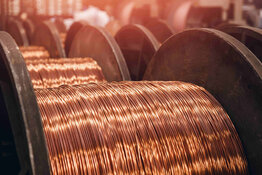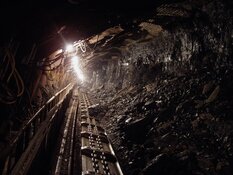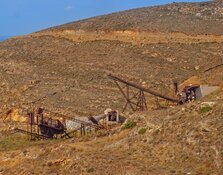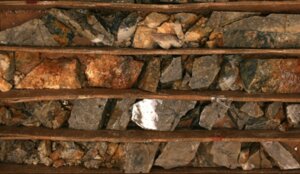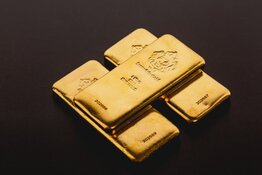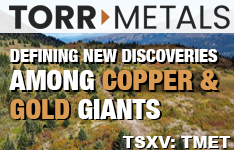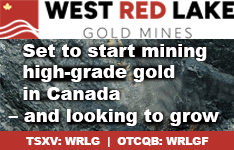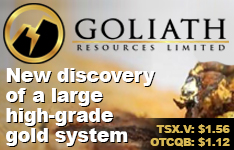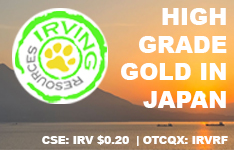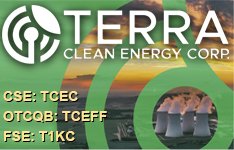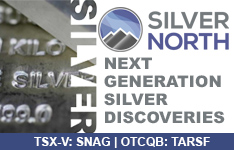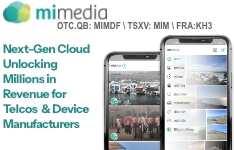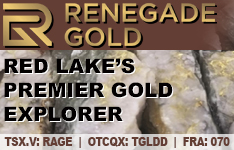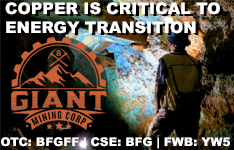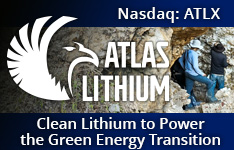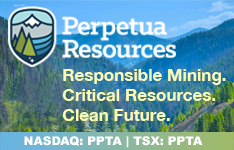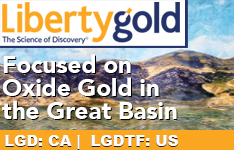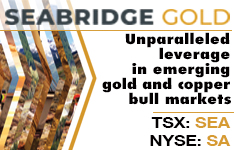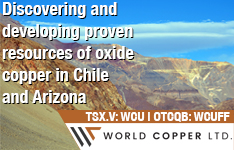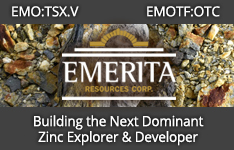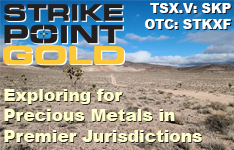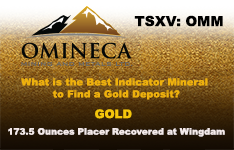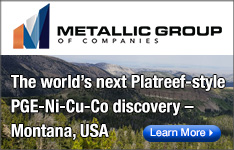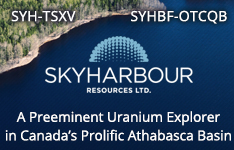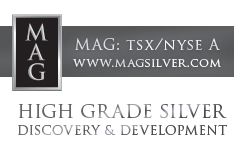Atlas Critical Minerals Corp. (JUPGF:OTCMKTS) announced successful initial processing and analytical results from its wholly owned Minas Gerais Graphite Project, achieving graphite recovery rates as high as 96.6%.
Surface samples from the project showed graphitic carbon content up to 15.4%. The project spans 1,258 hectares across two mineral rights in the state of Minas Gerais, Brazil.
Geochemical assessments were conducted at SGS Geosol, a top-tier analytical laboratory in Brazil favored by leading mining companies. Initial findings indicated graphitic carbon content as high as 15.4%, the company said.
"We believe we have a world-class project because we literally own a mountain of graphite," founder, Chief Executive Officer, and Chairman Marc Fogassa told Streetwise Reports. "It really is a mountain made of graphite. And now what we're trying to do is find out how high a grade is our graphite. Can it be used for batteries, which we think the answer is yes, but we're going to double-check."
Atlas said the primary aim of the scoping level metallurgical test program was to develop a preliminary concentration flowsheet to refine the graphite content into a market-ready concentrate.
The concentration tests utilized representative samples from the 2025 sampling campaign. These metallurgical tests, conducted by SGS Geosol, involved 50 kilograms of representative samples from the project and included stages such as rougher flotation, regrinding, and five cleaning stages with two attrition stages interspersed. The process did not involve circulating loads, and all flotation tailings were final.
Tests on samples with the highest (15.4%) and lowest (1.89%) graphitic carbon content were crucial to confirm that the experimental conditions were appropriate for the project’s ore spectrum, aiming to yield a high-grade final concentrate.
The flotation concentrates from the samples underwent granulometric analysis, with results showing that all size ranges achieved graphitic carbon grades between 91.3% and 97.7%. Employing standard flotation, regrinding, and attrition techniques, the final graphite concentrates reached remarkable grades of 91.9% and 96.6% total graphite carbon, underscoring the project’s robust potential. Figure 2 illustrates the final material recovered from the concentration of the company’s samples.
Promise for Other Rare Earths
On July 17, Atlas announced more initial findings of rare earth elements and titanium from its Alto do Paranaíba Project in the western region of Minas Gerais.
The project shows considerable promise for near-surface deposits of rare earth and titanium minerals within the “Mata da Corda” Group geological sequence, the company said.
Spanning over 25,000 hectares of mineral rights, the project is ideally located within a significant volcano-sedimentary geological sequence. For streamlined exploration, the vast area has been segmented into three exploration blocks. The geological framework of the Mata da Corda Group includes the sedimentary Capacete Formation intersected by the volcanic Patos Formation. This configuration, coupled with a geochemical signature tied to Brazil’s late Cretaceous Alkaline Provinces, offers exceptional prospects for mining rare earth elements and titanium, the company said.
The Project benefits from Brazil’s intense tropical laterization processes, which have resulted in the enrichment of titanium and rare earth elements within the weathered zones, Atlas noted. Mineralization is found in highly oxidized areas of the Mata da Corda Group, with drilling extending to depths of about 21 meters. A notable positive correlation between rare earth elements and titanium, along with the sequence’s pronounced magnetism, renders the geological unit highly amenable to geophysical surveys, thus enhancing the precision of future exploration efforts.
Highlights from Alto do Paranaiba
The company’s initial exploration campaign included 770 surface samples (rock and soil), which demonstrated consistently high grades across all three blocks:
- Block 1 highlights included 5,984 parts per million (ppm) TREO (total rare earths oxides), 1,700 ppm MREO (magnetic rare earths oxides), and 14.8% TiO2 (titanium dioxide); 4,897 ppm TREO, 1,301 ppm MREO, and 13.9% TiO2; and 4,648 ppm TREO; 1,246 ppm MREO; and 17.4% TiO2.
- Block 2 highlights included 7,091ppm TREO, 2,023 ppm MREO, and 11.9% TiO2; 6,759 ppm TREO, 2,191 ppm MREO, and 12.0% TiO2; and 6,405 ppm TREO, 1,643 ppm MREO, and 18.6% TiO2.
- Block 3 highlights included 28,870 ppm TREO, 7,493 ppm MREO, and 16.5% TiO2; 16,152 ppm TREO, 3,915 ppm MREO, and 6.1% TiO2; 10,586 ppm TREO, 679 ppm MREO, and 12.7% TiO2; and 23.2% TiO2.
Initial auger drilling comprised 11 drillholes totaling 144 meters, with 178 core samples analyzed. The drilling successfully intercepted high-grade, near-surface mineralization, Atlas said. Highlights included:
- DHTI-001: 12 meters at 5,961 ppm TREO, 1,690 ppm MREO, and 13.3% TiO2.
- DHTI-002: 6 meters at 7,729 ppm TREO, 2,680 ppm MREO, and 12.5% TiO2.
- DHTI-003: 3 meters at 4,713 ppm TREO, 1,311 ppm MREO, and 12.9% TiO2.
- DHCA-00001: 4.3 meters at 4,706 ppm TREO, 1,124 ppm MREO, and 15.1% TiO2.
- DHCA-00002: 7 meters at 3,442 ppm TREO, 821 ppm MREO, and 15.9% TiO2.
- DHCA-00003: 6 meters at 3,396 ppm TREO, 812 ppm MREO, and 11.2% TiO2.
- DHPM-00002: 6 meters at 3,007 ppm TREO, 682 ppm MREO, and 14% TiO2.
- DHPM-00003: 5 meters at 3,129 ppm TREO, 716 ppm MREO, and 13% TiO2.
- DHLF-00001: 6 meters at 3,275 ppm TREO, 754 ppm MREO, and 13.8% TiO2.
Atlas Lithium Maintains 1/3 Stake
Atlas Lithium Corp. (ATLX:NASDAQ) has emphasized its role in the critical minerals sector by maintaining a more than 32% ownership in Atlas Critical Minerals, granting Atlas Lithium exposure to a diverse array of essential minerals including rare earth elements, titanium, graphite, and uranium.
"Global demand for critical minerals has never been more urgent. Recent geopolitical developments have underscored the vital importance of critical minerals for economic and national security," Fogassa said.
Atlas Critical Minerals controls extensive rare earth deposits, covering about 54,000 hectares in Goiás and Minas Gerais, Brazil. Early soil sampling has revealed TREO levels up to 15,000 ppm and titanium dioxide levels reaching 20%. These elements are crucial for producing permanent magnets found in electric vehicle (EV) motors, wind turbines, and various defense applications. With China currently leading the global market in rare earth production and processing, the search for alternative sources is critical to diversify supply chains.
The graphite resources are needed to meet the surging demand for lithium-ion battery components. As the EV market grows, securing a stable supply of graphite is essential for energy storage technologies.
U.S.-based Atlas Lithium holds the most extensive lithium exploration portfolio in Brazil and is progressing with its 180-square-mile Neves project in the region.
"We continue to view 2025 as a pivotal year for ATLX as the company transitions from a lithium developer to producer," noted Jake Sekelsky, an analyst at Alliance Global Partners, in a March 10 research report. Sekelsky maintains a Buy rating on Atlas with a target price suggesting a 426% potential increase from its current share price.
Pentagon Buys Stake in Sole US Rare Earths Miner
The Pentagon is set to become the primary shareholder in MP Materials Corp. (MP:NYSE), the sole rare earths miner in the United States, following its agreement to purchase US$400 million in preferred stock, as announced by the company on July 10.
The funds from this investment will be directed towards expanding MP’s capabilities in processing rare earths and manufacturing permanent magnets, Ahead of the Herd's Rick Mills wrote.
Previously, MP Materials primarily extracted light rare earth elements from its Mountain Pass site and exported them to China for processing. This led to criticisms that the company was effectively under Chinese control and was not contributing to the advancement of the United States in refining rare earths or producing permanent magnets.
The ownership of MP Materials is primarily held by U.S. hedge funds JHL Capital Group and QVT Financial LP, along with CEO James Litinsky, who together possess a 51.8% stake. Additionally, Shenghe Resources, a Chinese entity with partial state ownership, maintains an 8% stake in the company.
As early as 2012, rare metals authority Jack Lifton identified graphite as "the next big thing" after the lithium and rare earths boom of the early 2000s.
In a discussion with The Critical Metals Report, Lifton remarked, “Graphite has traditionally been seen as a dull, ordinary industrial mineral, associated with pencils, golf clubs, and tennis racquets. Investors should reconsider. Traditional demand for graphite in the steel and automotive sectors is increasing by 5% each year, and graphite prices have tripled. Emerging uses such as heat sinks in computers, lithium-ion batteries, fuel cells, and both nuclear and solar power are major consumers of graphite. These applications are starting to exert significant pressure on existing supplies — and over 70% of that supply comes from China, which is no longer exporting this resource inexpensively to the global market as the country’s accessible, surface-level deposits are depleting.”
Graphite’s importance and potential scarcity have been acknowledged by the United States and the European Union, both of which have designated graphite as a supply-critical mineral. Recently, the British Geological Survey placed graphite just below rare earths and well above lithium in terms of supply criticality, Mills noted.
Lifton pointed out that graphite possesses a two-dimensional flake crystal structure, making it an excellent conductor of heat and electricity. It is a key component in the anodes of lithium-ion batteries, with each battery containing nearly four times more graphite than lithium.
The Catalyst: Market Expected to Surge
The critical minerals sector has continued to play a pivotal role in global industrial and geopolitical strategies in 2025, driven by the growing demands of clean energy technologies and increasing vulnerabilities in supply chains. As reported by the World Economic Forum on May 13, essential minerals like nickel, cobalt, platinum, and copper are crucial for technologies such as electric vehicles, wind turbines, and solar panels. The Forum emphasized that the demand for these minerals is expected to triple by 2030 and quadruple by 2040 to achieve net-zero objectives.
It was noted that while minerals like copper are relatively plentiful, the extensive lead times required to develop new mines, which can span approximately 20 years, present a significant challenge to supply.
Recycling has been suggested as a viable solution to this issue, although the current infrastructure for it is still developing. In the meantime, reliance on traditional mining and its associated value chains continues to be substantial. The concentration of processing capacities in specific regions also contributes to global supply concerns, with China processing 44% of the world’s copper and 75% of its cobalt, as per the World Economic Forum.
 Streetwise Ownership Overview*
Streetwise Ownership Overview*
Atlas Critical Minerals Corp. (JUPGF:OTCMKTS)
In response, the United States has implemented policies to enhance domestic production, including the expedited permitting of ten mining projects. A May 20 report from the South China Morning Post highlighted China’s tightened controls over rare earths and other strategic minerals, leading to increased measures against smuggling and export restrictions. The report pointed out the critical role of rare earth elements in U.S. defense systems and noted that "Beijing has increasingly weaponized this dependency" in trade negotiations.
Wang Xiaosong, an economics professor at Renmin University of China, remarked that rare earths had become "an important, key variable" in U.S.-China trade tensions, highlighting the strategic significance of these elements. Wang also mentioned that the United States was "20 years behind China" in rare earth separation and purification technologies.
Efforts to diversify sources include new agreements with countries like Ukraine and potential sourcing from Africa, though experts cited by SCMP have indicated that developing the necessary infrastructure could take over a decade.
Ownership and Share Structure
About 40% of Atlas Critical Minerals is owned by insiders and management about 33% by strategic corporate entities, Refinitiv reported. The rest is retail.
Top shareholders include Fogassa with 37.58%, Atlas Lithium with 32.7%, Monteiro de Paiva with 1.12%, Brian Bernier with 0.93%, and Gabriel Andrade with 0.07%.
Its market cap is US$23.34 million with 33.34 million shares outstanding. It trades in a 52-week range of US$0.40 and US$1.47.
| Want to be the first to know about interesting Cobalt / Lithium / Manganese, Battery Metals and Critical Metals investment ideas? Sign up to receive the FREE Streetwise Reports' newsletter. | Subscribe |
Important Disclosures:
- Atlas Lithium is a billboard sponsor of Streetwise Reports and pays SWR a monthly sponsorship fee between US$4,000 and US$5,000.
- As of the date of this article, officers and/or employees of Streetwise Reports LLC (including members of their household) own securities of Atlas Critical Minerals Corp.
- Steve Sobek wrote this article for Streetwise Reports LLC and provides services to Streetwise Reports as an employee.
- This article does not constitute investment advice and is not a solicitation for any investment. Streetwise Reports does not render general or specific investment advice and the information on Streetwise Reports should not be considered a recommendation to buy or sell any security. Each reader is encouraged to consult with his or her personal financial adviser and perform their own comprehensive investment research. By opening this page, each reader accepts and agrees to Streetwise Reports' terms of use and full legal disclaimer. Streetwise Reports does not endorse or recommend the business, products, services or securities of any company.
For additional disclosures, please click here.


